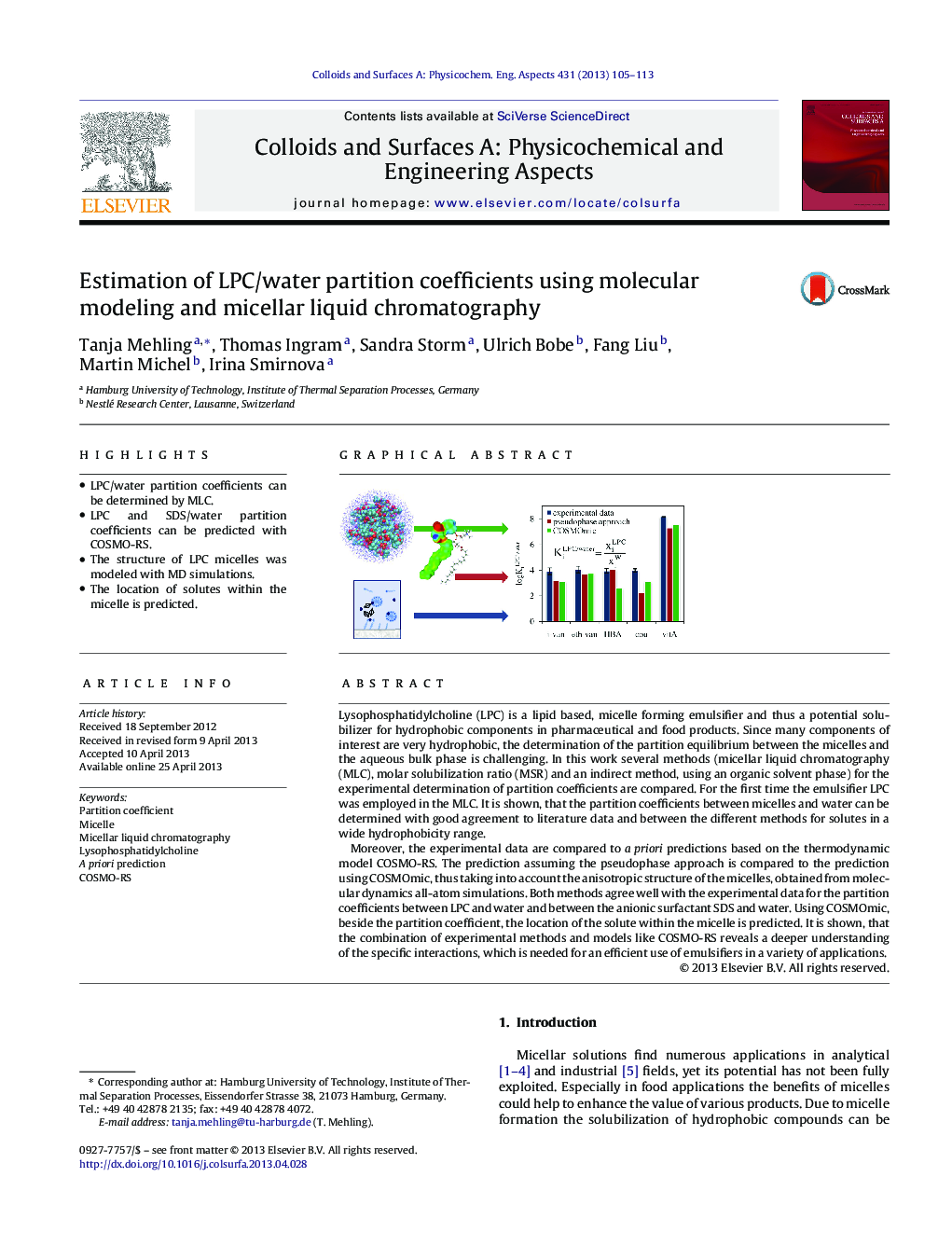| Article ID | Journal | Published Year | Pages | File Type |
|---|---|---|---|---|
| 593556 | Colloids and Surfaces A: Physicochemical and Engineering Aspects | 2013 | 9 Pages |
•LPC/water partition coefficients can be determined by MLC.•LPC and SDS/water partition coefficients can be predicted with COSMO-RS.•The structure of LPC micelles was modeled with MD simulations.•The location of solutes within the micelle is predicted.
Lysophosphatidylcholine (LPC) is a lipid based, micelle forming emulsifier and thus a potential solubilizer for hydrophobic components in pharmaceutical and food products. Since many components of interest are very hydrophobic, the determination of the partition equilibrium between the micelles and the aqueous bulk phase is challenging. In this work several methods (micellar liquid chromatography (MLC), molar solubilization ratio (MSR) and an indirect method, using an organic solvent phase) for the experimental determination of partition coefficients are compared. For the first time the emulsifier LPC was employed in the MLC. It is shown, that the partition coefficients between micelles and water can be determined with good agreement to literature data and between the different methods for solutes in a wide hydrophobicity range.Moreover, the experimental data are compared to a priori predictions based on the thermodynamic model COSMO-RS. The prediction assuming the pseudophase approach is compared to the prediction using COSMOmic, thus taking into account the anisotropic structure of the micelles, obtained from molecular dynamics all-atom simulations. Both methods agree well with the experimental data for the partition coefficients between LPC and water and between the anionic surfactant SDS and water. Using COSMOmic, beside the partition coefficient, the location of the solute within the micelle is predicted. It is shown, that the combination of experimental methods and models like COSMO-RS reveals a deeper understanding of the specific interactions, which is needed for an efficient use of emulsifiers in a variety of applications.
Graphical abstractFigure optionsDownload full-size imageDownload as PowerPoint slide
